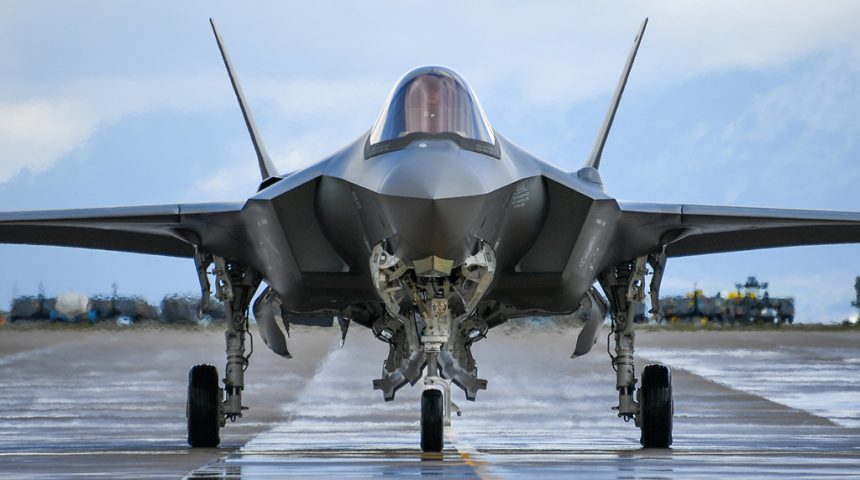Poland needs to make the F-35 work with other elements of the air force – as a system
The dominating media narrative in the Polish public sphere portrays the F-35 acquisition as a giant leap forward for the Polish Air Force. However, there is still a plethora of issues and matters that have a big “question mark” above them, when it comes to the future shape of Polish combat aviation. Many aspects, tied to the integration and implementation of the F-35, are quite problematic. Most of them refer to the proper levels of interoperability between the F-35, and the legacy platforms operated by the Polish military.
The Polish F-35 acquisition would be useless if the MoD does not proceed with upgrading the remaining elements of the Air Force (seen as a whole system). One should remember the timeline of the F-35 program in Poland while reading this article as well – the pilots training is scheduled to begin in 2024, the first jets are to arrive in Poland in 2026, while IOC (Initial Operational Capability) is expected in 2028.
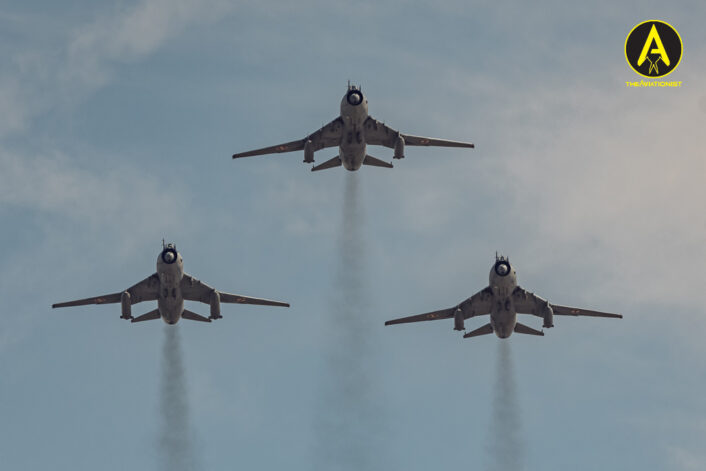
First, let’s start the discussion of this matter, beginning with the legacy combat aircraft that the Polish Air Force operates.
Extending the lifecycles of MiG-29 Fulcrums and Su-22 Fitters is a complete waste of time, especially when it comes to the latter. This may seem a strong opinion, but one should be aware that the Su-22’s communications capability is fairly limited. The Polish Fitter, despite undergoing several upgrades over the years, lacks the Link 16 datalink too. And this would be the bare minimum to operate near or in the contested multi-domain environment. It seems impossible to imagine the Polish Su-22 fleet taking part in any, contemporary, full-scale conflict. It also seems that the only role that the Fitters have is to keep the trained pilots flying. Finally, the Fitters are simply approaching the point on the timeline that marks the end of their operational lifecycle.
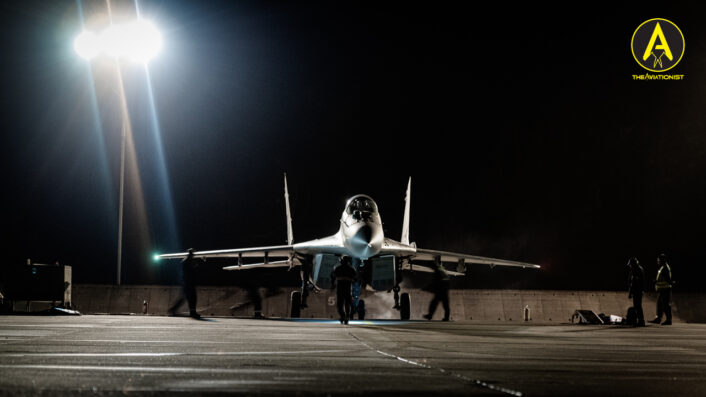
The Fulcrums, often romanticized among the Polish aviation geeks, also exhibit limited combat capability.
The MiG-29 remains usable practically solely in the air policing role – to a limited extent though. This is why the introduction of upgraded IFF systems on the Polish Fulcrums may seem to be reasonable.
The legacy, post-Soviet designs also suffer from the utter lack of a manufacturer-certified supply chain. This is for obvious reasons and simply stems from the geopolitical position of Poland being not only a NATO ally but also a NATO frontline nation. Maintaining a good relationship with the Russian defense industry is, obviously, impossible here.
Another doubt emerges when it comes to the pilots. It remains dubious, if not impossible, to carry out a type-conversion training for the pilots flying the legacy Soviet-designed aircraft, to be able to fly the F-35. The F-35, as a data-centric platform, requires a different mindset altogether. One could risk saying that training a Fulcrum pilot to fly the F-35 would not be cost-effective, or even impossible. Things look different when it comes to the F-16 drivers. Those jets, considering, for instance, the way the primary user (USAF) treats them, have at least some future ahead. Furthermore, the F-16s would also become the backbone of the Polish Air Force in the future.
However, it needs to be noted that the Polish procurement of the M-346 Master AJT aircraft may be viewed as a prospective step since Master is a modern platform (and system) capable of creating the right habits among the pilots flying the Lightning II.
The Polish Air Force, assuming that the legacy Soviet combat aircraft are withdrawn, would operate 48 F-16s, and 32 F-35s (if no further F-16 procurement, that was rumored to happen some time ago, happens). The above means that the Vipers would constitute 60% of the MRCA operated by Poland.
The above, meanwhile, translates into another requirement. The Polish MoD would need to think of an MLU for the Viper fleet. Some signs suggest that analytical effort within that scope has already been launched at the MoD. It is a bit late, but still – one needs to take notice of that. The “late” adjective seems appropriate here since Mid-Life Upgrades usually happen halfway through the given weapons system planned lifecycle (usually – 30 years) – this year, the Polish Air Force has been operating the Viper for 15 years.
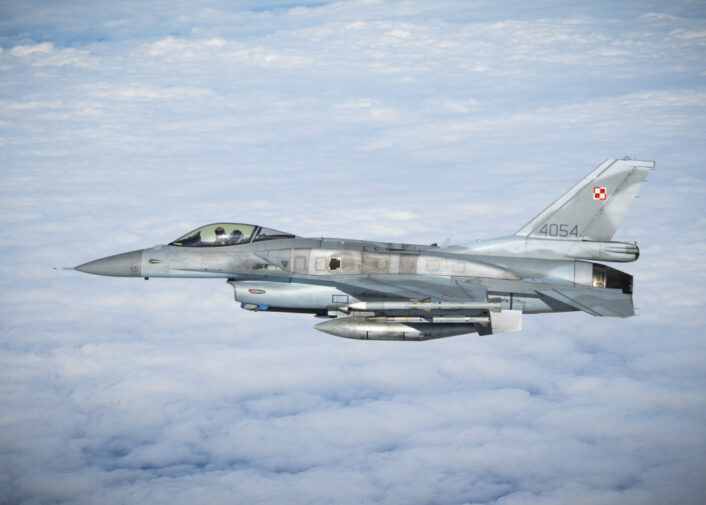
In the recent interview with Brig. General Ireneusz Nowak, Commander of the 2nd Tactical Air Wing of the Polish Air Force, published by Polska Zbrojna, some remarks were made, when it comes to the MLU program. Nowak suggested that Poland should immediately launch an MLU program, alongside other allies. He also made some remarks as to the specifics. The pilots want the Polish Vipers to have a new AN/APG-83 radar fitted onto their F-16s – matching the capabilities of the counterpart sensor on the F-35. The changes, Nowak said, would also happen in the EW and C2 suites, including the latest Link16 JTRS datalink. Interestingly, the Polish pilot also mentioned the IRST passive sensor system as a part of the upgrade package. The pilots are also said to request the AGCAS system to be implemented, which would enhance flight safety.
The integration of Vipers and Lightnings revolves around communications. The communications capabilities given to the F-35 by MADL (Multifunction Advanced Data Link) mean that it can “talk” to other F-35s in a stealthy manner. The Link 16 network, however, is not able to receive signals from MADL. This is why MADL, as a solution, is often criticized. The critics claim that it is not reasonable to create a new data link type, since Link 16 is the NATO standard. Some opinions state that it would be far more reasonable to upgrade the Link 16, and ‘equip’ it with MADL capacity. However, MADL probably has more upgrade potential than the F-16 has – this is why Link 16 is soon going to be rendered obsolete, by a newer, more efficient solution such as MADL. Thus, it seems to be more adequate to carry out an avionics upgrade of the Polish Vipers, so that they would be capable of stealthy communications. This could, for instance, be done via designing a pod that would address the above requirements. Since some of the NATO Air Forces still operate 4th generation aircraft, a market for a pod as such surely exists, and Poland is not the sole nation with a requirement as such. The scale of production would make a solution as such cheaper. USAF has already faced this challenge in the past – to establish communications between the F-15s and the F-22s, the Talon Hate pod was designed. The altogether networked mindset adopted by the F-35 designers means that it is crucial for the Polish Air Force to upgrade its F-16 fleet – in parallel to the F-35 acquisition, or even before it happens (though it seems too late now).
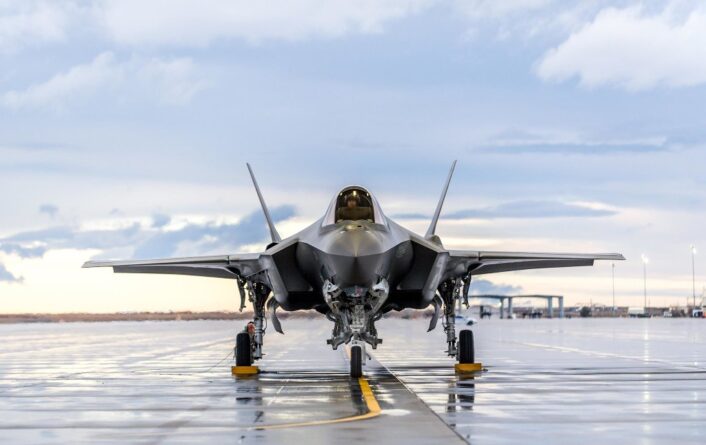
The argument suggesting that more F-16s should be bought is somewhat invalid as well. This is because the 4th generation aircraft (such as Viper) are reaching the end of their life within the contemporary air forces. In 30 years Poland, with e.g. 72 F-16s and just 32 F-35s would be lagging, as all of the major European air arms would operate F-35s or other 5th, or even 6th generation fighter platforms by then. Furthermore, the scale effect associated with the mass introduction of the F-35s into service would translate into lower maintenance costs, more efficient support/supply chains, and so on. With the Viper being phased out, and with only a few users remaining active around the world, the maintenance/supply chain costs would only go up.
There is yet another direction that should be investigated by the Polish decision-makers when it comes to the air force. The procurement of tankers (or sharing aerial refueling capabilities with other European nations) would be a major improvement when it comes to the capabilities of military aviation. Some critics of this path suggest that Poland has no expeditionary commitments that it needs to fulfill, that would require an autonomous AAR capability. However, those critics overlook another “force-multiplying” capability that tankers bring into the equation. Thanks to the tankers, using fewer aircraft, the Air Force may carry out more sorties. Any aircraft remaining in the air during a CAP (Combat Air Patrol) sortie would not need to go back to the bases to continue the monitoring of their area of responsibility – because they have a tanker orbit available nearby. This also means that the potential adversary would have some trouble in predicting the endurance of the given aircraft, thus making sense and predicting the changes of the air picture would become another challenge to tackle.
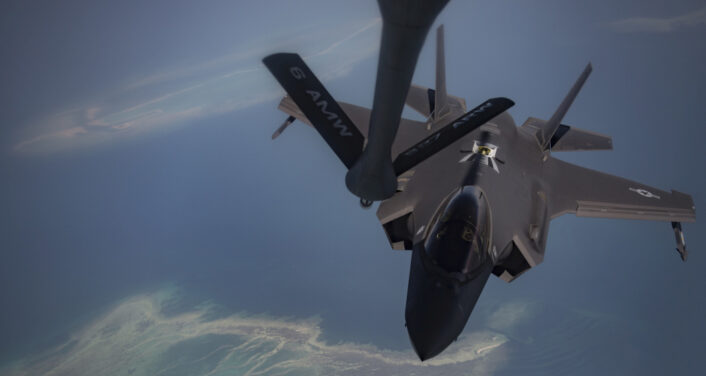
Another force multiplier that would boost the capability of the Polish Air Force would be an AEW (Airborne Early Warning) platform. How important AWACS-class aircraft remains is shown by the Saab’s offer in the Finnish H-X MRCA procurement. Saab offers its Gripen aircraft in a bundle with the Global Eye AEW platform. Having a comprehensive awareness of the air picture remains crucial in modern air combat since combat aircraft do not have to use their sensors to make out what happens around them. They receive the relevant data over a data link from an AEW aircraft. This, in turn, would mean that the combat aircraft have no relevant signature visible, caused by the emission of RF radiation from their sensors, and this makes them more stealthy overall. So far, Poland has been using the NATO AWACS component stationed in Germany, to fill in the capability gap, as the Air Force has no autonomous AEW capability of its own.
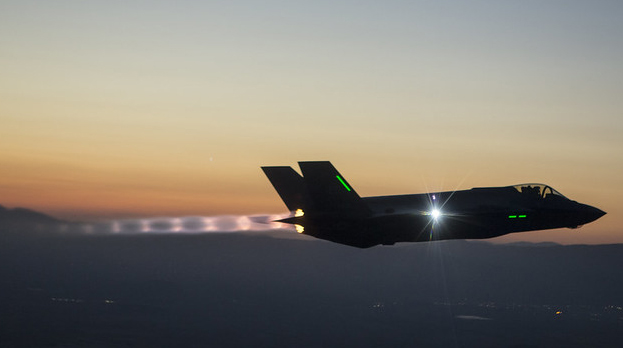
Poland has Karkonosze (tanker) and Płomykówka (SIGINT platform) procurement programs planned, but these have been put into a freezer for now, and seem to have been forgotten by the MoD.
The factors outlined above are just a tip of the proverbial iceberg in a long list of issues that make the F-35 acquisition alone insufficient, in pushing the Polish Air Force into the 21st Century, so that it can combat the upcoming threats. The F-35 alone is not a “golden bullet”, a universal remedy, that would resolve all of the operational capability gap problems that the Polish Air Force is facing.

